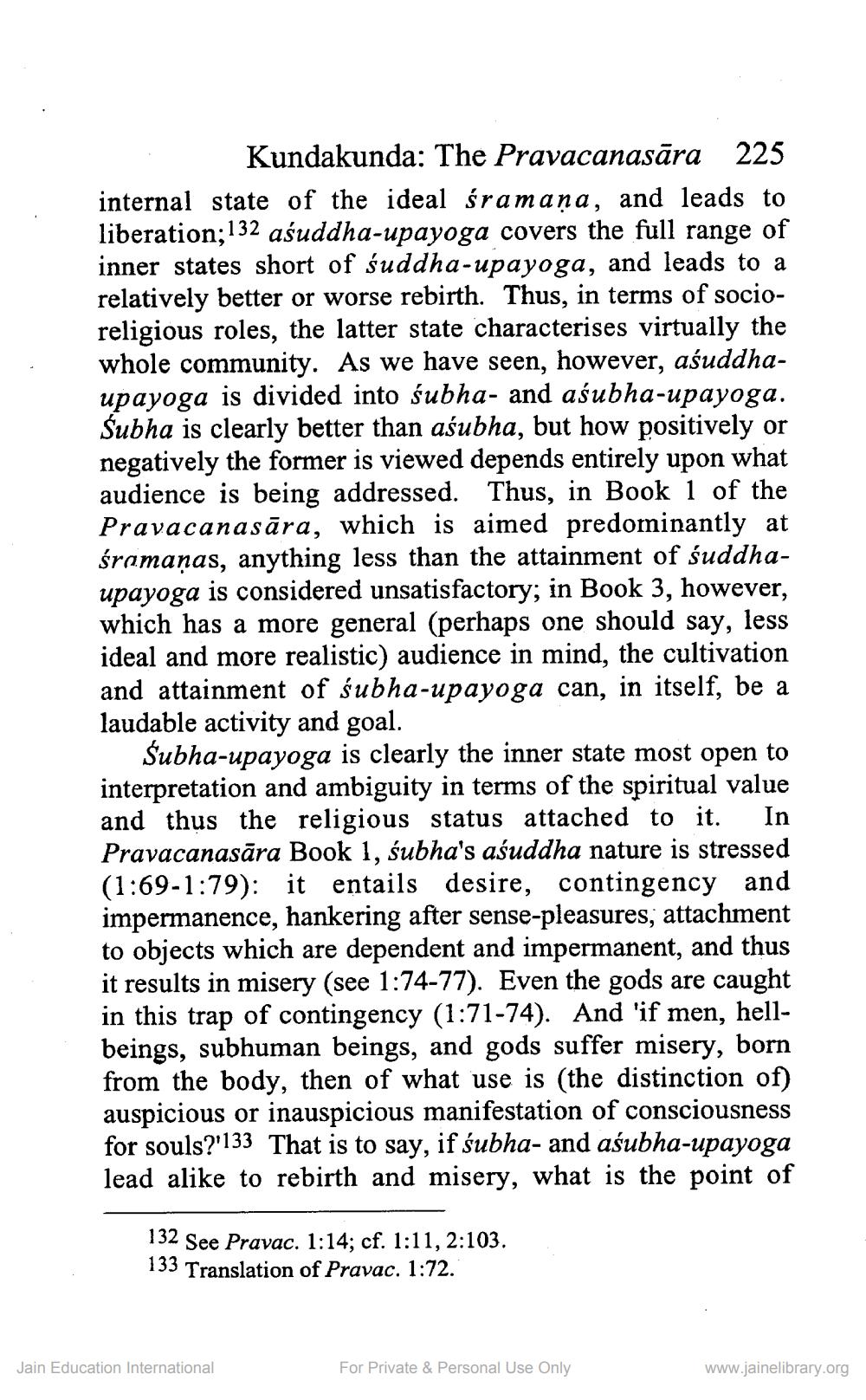________________
Kundakunda: The Pravacanasāra 225 internal state of the ideal śramana, and leads to liberation;132 aśuddha-upayoga covers the full range of inner states short of śuddha-upayoga, and leads to a relatively better or worse rebirth. Thus, in terms of socioreligious roles, the latter state characterises virtually the whole community. As we have seen, however, aśuddhaupayoga is divided into śubha- and aśubha-upayoga. śubha is clearly better than aśubha, but how positively or negatively the former is viewed depends entirely upon what audience is being addressed. Thus, in Book 1 of the Pravacanasāra, which is aimed predominantly at śramaņas, anything less than the attainment of suddhaupayoga is considered unsatisfactory; in Book 3, however, which has a more general (perhaps one should say, less ideal and more realistic) audience in mind, the cultivation and attainment of śubha-upayoga can, in itself, be a laudable activity and goal.
Subha-upayoga is clearly the inner state most open to interpretation and ambiguity in terms of the spiritual value and thus the religious status attached to it. In Pravacanasāra Book 1, śubha's aśuddha nature is stressed (1:69-1:79): it entails desire, contingency and impermanence, hankering after sense-pleasures, attachment to objects which are dependent and impermanent, and thus it results in misery (see 1:74-77). Even the gods are caught in this trap of contingency (1:71-74). And 'if men, hellbeings, subhuman beings, and gods suffer misery, born from the body, then of what use is (the distinction of) auspicious or inauspicious manifestation of consciousness for souls?'133 That is to say, if śubha- and aśubha-upayoga lead alike to rebirth and misery, what is the point of
132 See Pravac. 1:14; cf. 1:11, 2:103. 133 Translation of Pravac. 1:72.
Jain Education International
For Private & Personal Use Only
www.jainelibrary.org




